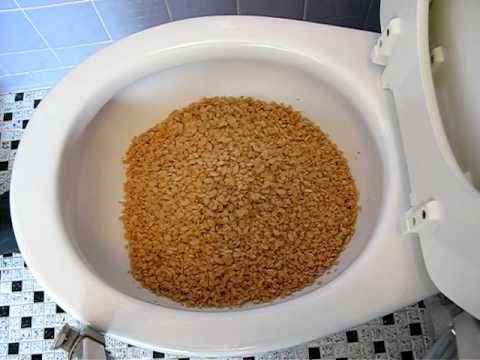Are You Capable to Dispose of Food Down the Toilet?
Are You Capable to Dispose of Food Down the Toilet?
Blog Article
The publisher is making several good points regarding Is it safe to flush food (especially rice) down the toilet? as a whole in the article following next.

Intro
Many people are usually confronted with the problem of what to do with food waste, especially when it involves leftovers or scraps. One typical concern that occurs is whether it's alright to purge food down the toilet. In this article, we'll look into the reasons individuals might think about purging food, the effects of doing so, and different methods for proper disposal.
Reasons that people might take into consideration flushing food
Absence of awareness
Some people may not be aware of the possible damage caused by flushing food down the bathroom. They may mistakenly believe that it's a safe method.
Comfort
Flushing food down the commode may appear like a fast and easy service to dealing with undesirable scraps, specifically when there's no close-by trash can available.
Negligence
In many cases, individuals might just choose to flush food out of large laziness, without considering the repercussions of their activities.
Consequences of flushing food down the commode
Environmental impact
Food waste that ends up in rivers can add to contamination and harm water ecological communities. Additionally, the water used to flush food can stress water sources.
Plumbing concerns
Flushing food can lead to clogged pipelines and drains pipes, triggering pricey pipes repairs and hassles.
Types of food that must not be purged
Fibrous foods
Foods with coarse appearances such as celery or corn husks can get entangled in pipes and cause blockages.
Starchy foods
Starchy foods like pasta and rice can absorb water and swell, causing obstructions in pipes.
Oils and fats
Greasy foods like bacon or cooking oils need to never be purged down the toilet as they can solidify and trigger obstructions.
Correct disposal techniques for food waste
Using a waste disposal unit
For homes geared up with garbage disposals, food scraps can be ground up and purged through the pipes system. Nevertheless, not all foods are suitable for disposal in this fashion.
Recycling
Specific food product packaging products can be reused, reducing waste and reducing environmental impact.
Composting
Composting is an eco-friendly means to take care of food waste. Organic products can be composted and utilized to enhance soil for horticulture.
The value of correct waste management
Reducing ecological harm
Proper waste monitoring methods, such as composting and recycling, help minimize air pollution and preserve natural resources for future generations.
Shielding plumbing systems
By avoiding the practice of flushing food down the toilet, house owners can avoid pricey pipes repair services and maintain the stability of their pipes systems.
Conclusion
In conclusion, while it may be tempting to purge food down the bathroom for ease, it is very important to comprehend the prospective effects of this action. By embracing proper waste management techniques and throwing away food waste responsibly, people can add to healthier plumbing systems and a cleaner atmosphere for all.
FLUSH FOOD DOWN THE TOILET?
FLUSHING FOOD CAN CAUSE BLOCKED DRAINS IN YOUR HOME
All of the plumbing fixtures in your home are connected to the same sewer pipe outside of your home. This outdoor sewer pipe is responsible for transporting all the wastewater from your home to the Council sewer mains. Even small pieces of food that go down the kitchen sink can cause problems for your sewer. It should therefore be obvious that flushing larger bits of food, such as meat, risks a clog in either the toilet itself or the sewer pipes. Flushing greasy food is even more problematic because oil coagulates when it cools, coating the interior lining of your pipes.
THE TOILET IS NOT A BIN
Food isn’t the only thing that people shouldn’t be flushing down the toilet. People use the toilet to dispose of all kinds of things such as tampons, makeup wipes, dental floss, kitty litter and even underwear. Water goes to great lengths to educate residents about the high costs and stress placed on wastewater treatment systems simply from people flushing the wrong stuff down the toilet. It costs taxpayers millions of dollars each year, and homeowners thousands in blocked drain repairs.
FLUSHING FOOD IS A WASTE OF WATER
Flushing food is a waste of our most precious resource - water. In June this year Level 1 water restrictions were introduced to protect water supply from drought conditions. Much of New South Wales continues to be affected by prolonged drought with recent figures revealing up to 97 per cent of the state remains in drought. Depending on whether you have a single or dual flush toilet, every single flush uses between five and 11 litres of water. In the current climate this is a huge amount of water to be wasting on flushing food that should be placed in the bin (or better yet, the compost).
https://www.jabplumbingsolutions.com.au/blog/can-you-flush-food-down-the-toilet

I came across that content about Think Twice Before Flushing Food Down Your Toilet when looking around the search engines. In case you enjoyed reading our blog post please do not forget to share it. I truly appreciate your readership.
Visit Website Report this page